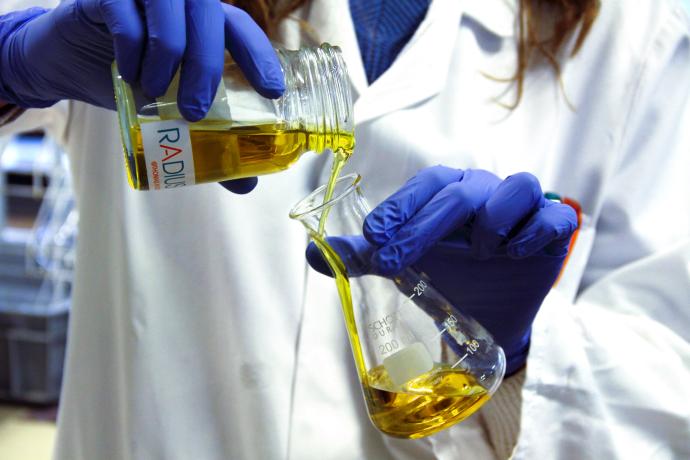

This insect is popular due to its ability to convert low-value biomass (e.g. waste) into high-value components such as proteins. Consequently, the black soldier fly has great potential for various applications. This efficient, tropical fly species has a short life cycle and poses no risk of infestation.
The black soldier fly (Hermetia illucens), is a species of fly (Diptera) belonging to the family of Stratiomyidae. This fly originates from North- and Central America and prefers tropical and subtropical conditions. This insect cannot reproduce naturally in cold and temperate climates.
The adult fly is black in color with blue-tinged wings, and measures approximately 1.5 to 2 cm in size. Adults lack biting mouthparts. Consequently, their energy reserves are depleted after approximately one week and they will subsequently die. However, black soldier flies can drink, extending their life span to two weeks. Their absence of biting mouthparts also means they do not transmit diseases and therefore are not regarded as pest insects.
The black soldier fly has a short life cycle, lasting a total of about 6 weeks (egg to egg). Black soldier flies are holometabolic insects: they undergo a pupal phase to complete the transformation from larva to adult. Once transformed to adult, it takes about 4 days for the first eggs to be oviposited. The female deposits her eggs in clusters, preferably in dark crevices and near a potential food source for her offspring. On average, 1 female fly deposits about 300-600 eggs during her lifetime.

However, it are not the flies but the larvae that are of interest for various applications. The larvae feed on a wide range of low-value organic material (e.g. waste). They convert feed with high efficiency in order to build up an energy reserve for reproduction in a short period of time, to last the entire adult stage. Consequently, the larvae contain high-quality components, such as proteins, fats and chitin. These interesting properties make the black soldier fly larvae suitable for applications such as organic waste treatment, as well as animal feed and technical applications such as bio-based chemicals.

Black soldier fly larvae are not dependent on light. The flies, on the other hand, do depend on light for optimal reproduction. They are kept in cages, while the larvae are housed in a rearing crate (for example, 40x60 cm). The production phase (from egg to harvestable larva) takes 15 days on average. The larvae can be fed with a broad range of low-value substrates, however, the first 5 days of the larval stage the larvae are vulnerable. This stage is called the nursing period and during this stage the larvae are best reared on a higher quality feed (e.g. wheat bran). At our facility, larvae are routinely reared on Gainesville diet (50% wheat bran, 30% alfalfa meal, 20% corn meal) or chicken feed (dry matter 30%) for research purposes. Larvae are reared in a climate chamber set at a temperature of 27°C and 60% relative humidity. At these conditions, the results presented below can be obtained.

dry matter/live weight
total yield in live weight per 40x60 cm rearing crate
live weight
dry matter basis
She now maintains the insect colonies in the Insect Pilot Plant and assists in research regarding insect optimisation and the use of by-products as insects feed.
Ann onderhoudt de insectenkweek in de Insect Pilot Plant en helpt mee in het onderzoek naar productie-optimalisatie en het gebruik van nevenstromen in het teeltproces.